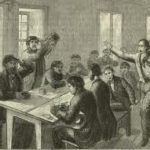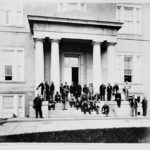Though insane patients were not always embraced by the communities around asylums, communities were often glad to have the institutions near them. Asylums meant jobs, and even small ones could have an economic impact. When the Canton Asylum for Insane Indians opened, residents desired the available positions.
Andrew Hedges, a full-blooded Santee Sioux Indian and the asylum’s first patient, arrived to the delight of the asylum staff on the last day of 1902. They met him at the train station, though this was probably the only time the entire staff turned out for a new patient. The greeters were Mrs. Seely (the financial clerk’s wife) was the matron, Mrs. Turner (the assistant superintendent’s wife) was the seamstress, W.F. More was the attendant, and Hannah Mickelson was the cook.
Canton’s newspaper noted that “Notwithstanding the most specific promises and a petition largely signed by prominent republicans of our city, and county, Mrs. Naylor was not given a position at the asylum.”
By 1927, 21 people were employed at the asylum besides the superintendent. Though Canton residents appreciated the asylum’s jobs, the work was often unpleasant. Attendants came and went with regularity. Dr. Hummer found the lack of trained, dedicated professionals a particularly frustrating aspect of running the asylum.
________________________________________________________________________






